So you’re looking to buy a new car in Spain that isn’t too expensive.
Perhaps you’ve studied the second-hand market and wondered if you might as well buy a brand-new vehicle, seeing as getting bargains on used cars doesn’t seem that easy anymore.
READ MORE: Why you should think twice about buying a car in Spain even if it’s second hand
The average price people in Spain paid for a new vehicle in 2022 was €21,553, more than €5,000 than the average paid in 2017 (€17,099).
But the list we provide below showcases how it is possible to buy a car for considerably less, in some cases half that.
Before you scroll down, we want to offer you some pointers to make sure that you get the best possible price, as the showrooms in your area may have the cars we’ve listed for a higher or lower amount.
First of all, keep in mind that these prices are for the most basic models without specs such as central locking, electric windows on all doors, better sound system, better rims, better upholstery and certain colours. The more of these features you add, the higher the price.
Also, it’s worth knowing that to be able to buy any of these cars for these prices, you must accept the financing conditions of the brand. If you want to make the payment in cash, the prices will be slightly higher. Obviously, you’ll have to pay special attention to the interest rates as well as the number of instalments and how much each is.
One of the best ways to land a good price on a vehicle in Spain is when a new model is about to be released, which leads showrooms to often drop the price on the soon-to-be older models.
Don’t rule out ‘kilómetro cero‘ cars, which are floor model vehicles that have been driven by potential buyers. They will have only a few kilometres on them and will rarely have any damage at all, but you may be able to knock a couple thousand euros of the price.
If you already have a car in Spain, remember that the Spanish government launched a new cars subsidies scheme called Plan Renove which allows buyers to receive up to €7,000 in 2023 for trading in older vehicles when purchasing a lower-emissions new vehicle, with further subsidies also offered by manufacturers and dealerships.
With all those tips in mind, it’s now time to move onto the list of cheapest cars in Spain in 2023. As we can’t claim to be car specialists, we will use Top Gear’s words to offer you their bite-sized pros and cons in a nutshell. Keep in mind as well that the vehicles’ appearance and specs listed below may have changed slightly with newer models, usually for the better.
Citroën AMI – from €8,990
Body style: quadricycle
Battery 5.5 kWh lithium-ion
Range: 75 km on full charge
Passengers: two
Doors: 2
Pros: “Cute, simple, fun, cheap. Better than public transport”
Cons: “Slow, basic, only any use in cities really”

Renault Twizy – from €12,105
Body style: quadricycle
Battery 6.1 kWh lithium-ion
Range: 80 km on full charge
Maximum speed: 80km/h but limited to 45km/in Spain
Passengers: one
Doors: 2
Pros: “It’s tiny, it’s quirky, it recharges in 3.5 hours”.
Cons: “There are some security issues the (optional) doors do little to alleviate.”

Hyundai i10 – from €12,250
Acceleration 0-100 km/h: 12.6 to 17.8 seconds
Body style: Hatchback
Cargo volume: 252 L, 1,050 L with seat area
Dimensions: 3,670-3,675 mm L x 1,680 mm W x 1,480-1,483 mm H
Number of doors: 5
Pros: “Comfortable, good tech/equipment, smooth and sensible to drive”
Cons: “Dodgy auto gearbox, steering wheel doesn’t adjust for reach, lane keep tech is overzealous”
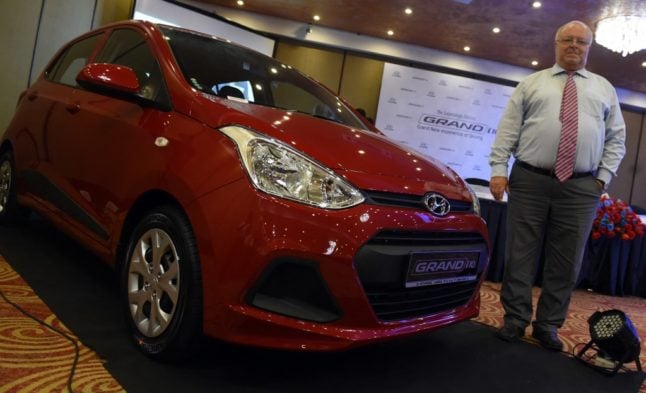
Fiat Panda – from €12,955
Fuel economy: 5.3 l/100km combined
Fuel tank capacity: 38 L
Body style: Hatchback
Acceleration 0-100 km/h: 14.7 seconds
Cargo volume: 225 L, 870 L with seat area
Pros: “Cute looks, good space, cheap to run, delightfully unsporty”
Cons: “Everyone else has moved on in the last 10 years”
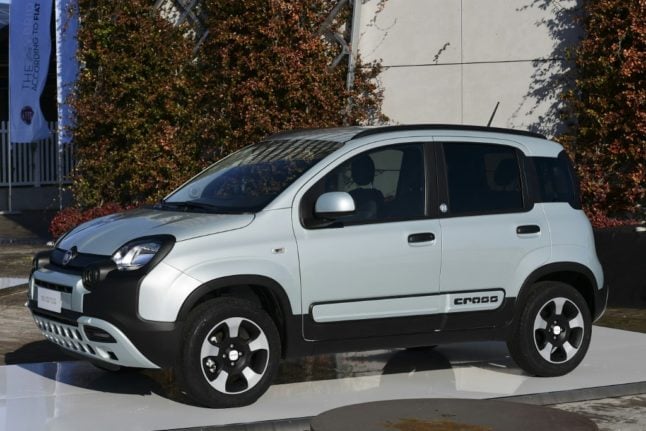
Dacia Sandero – from €13,040
Acceleration 0-100 km/h: 11.6 to 14.2 seconds
Body style: Hatchback
Cargo volume: 328 L, 1,108 L with seat area
Engine cylinder configuration: Straight engine
Dimensions: 4,088-4,099 mm L x 1,848 mm W x 1,499-1,535 mm H
Number of doors: 5
Pros: “Smart-looking, spacious, and above all great value”
Cons: “Very little that can’t be explained away by its price”

MG ZS Crossover– from €13,990
Body style: SUV
Acceleration 0-100 km/h: 8.2 seconds
Engine: 1l to 1.5l (including hybrid)
Boot space: 448 litres
Dimensions: 4,314 mm L x 1,809 mm W x 1,611 mm H
Doors: 5
Pros: “Enormously cheap, strong equipment checklist, surprisingly chuckable chassis”
Cons: “Naff engines, dire auto gearbox, no active safety kit, totally anonymous design”

Seat Ibiza – from €14,100
Acceleration 0-100 km/h: 8.1 to 15.3 seconds
Body style: Hatchback
Cargo volume: 355 L, 1,165 L with seat area
Engine cylinder configuration: Straight engine
Dimensions: 4,059 mm L x 1,780 mm W x 1,444 mm H
Number of doors: 5
Pros: “Useful everyday car, good economy for a non-hybrid, looks good”
Cons: “Doesn’t stand out, the interior could be nicer, no sporty Cupra version”
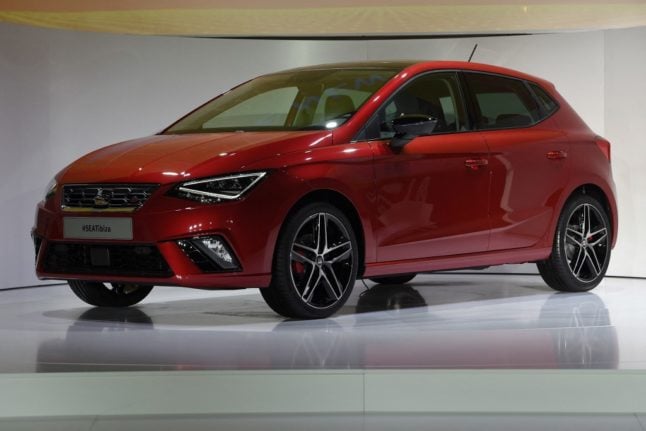
Kia Picanto – from €14,200
Acceleration 0-100 km/h: 10.3 to 17.2 seconds
Body style: Hatchback
Cargo volume: 255 L, 1,010 L with seat area
Engine cylinder configuration: Straight engine
Dimensions: 3,595-3,670 mm L x 1,595-1,625 mm W x 1,485-1,500 mm H
Number of doors: 5
Pros: “Decent looks, roomy interior, good handling, cheap to run, great warranty”
Cons: “Lesser models could do with more power, of course”

Hyundai i20 – from €14,490
Acceleration 0-100 km/h: 6.2 to 13.1 seconds
Body style: Hatchback
Cargo volume: 352 L, 1,165 L with seat area
Engine cylinder configuration: Straight engine
Dimensions: 4,045-4,075 mm L x 1,775 mm W x 1,440-1,450 mm H
Number of doors: 5
Pros: “Clever powertrain, good interior tech, practical, good to drive”
Cons: “Ride is too firm, interior should feel more premium at this price”
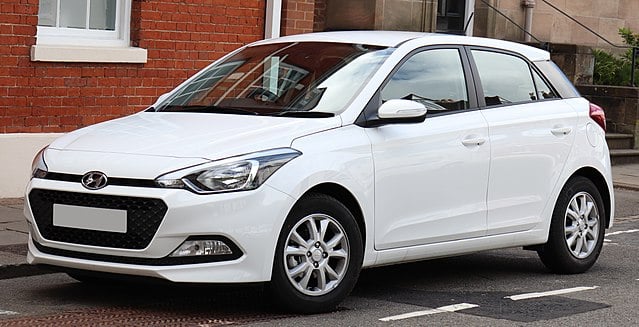
Fiat 500 Hybrid – €14,513
Fuel economy: 4.6 l/100km combined
Horsepower: 70 hp @ 6,000 rpm
Battery: 0.1 kWh 12 V lithium-ion
Engine: 1.0 L 3-cylinder
Acceleration 0-100 km/h: 13.8 seconds
Pros: “Simple, cheap, lightweight. Easy”
Cons: Not a proper hybrid
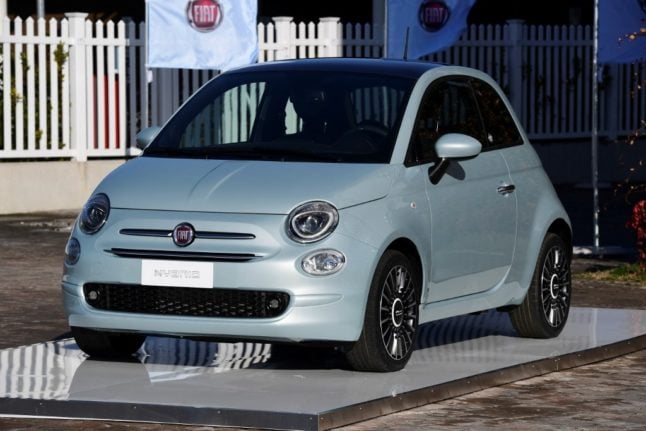
Toyota Aygo X Cross – from €14,800
Acceleration 0-100 km/h: 13.8 seconds
Body style: Sport Utility Vehicle
Cargo volume: 269 L, 829 L with seat area
Engine cylinder configuration: Straight engine
Dimensions: 3,700 mm L x 1,740 mm W x 1,525 mm H
Number of doors: 5
Pros: “Chunky looks, much safety tech, not too pricey”
Cons: “It’s more of a styling job than a city car rejuvenation”

Mitsubishi Space Star – from €15,250
Acceleration 0-100 km/h: 14.1 to 15.8 seconds
Body style: Hatchback
Cargo volume: 209 L, 881 L with seat area
Engine cylinder configuration: Straight engine
Dimensions: 3,845 mm L x 1,665 mm W x 1,505 mm H
Number of doors: 5
Pros: Cute and compact, easy to drive
Cons: Steering is a little heavy. Engine noise is loud.
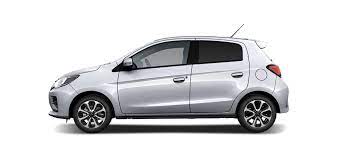
Citroën C3 – from €15,795
Acceleration 0-100 km/h: 12.5 seconds
Body style: Hatchback
Cargo volume: 300 litres, 922 with seated area
Dimensions: 3,996 mm L x 1,749 mm W x 1,474 mm H
Number of doors: 5
Pros: “Comfortable, stylish, versatile. Offers something different to competitors”
Cons: “Sedate in most guises, touchscreen controls can be irritating, options quickly add up”

Renault Clio – from €15,880
Acceleration 0-100 km/h: 9.4 to 17.1 seconds
Body style: Hatchback
Cargo volume: 301 to 391 L, 979 to 1,069 L with seat area
Engine cylinder configuration: Straight engine
Dimensions: 4,050 mm L x 1,798 mm W x 1,440 mm H
Number of doors: 5
Pros: “Upmarket interior, good ride, fuel economy”
Cons: “Not a huge revolution in terms of styling, few standout features”

Hyundai Bayon – from €15,890
Acceleration 0-100 km/h: 10.4 to 13.5 seconds
Body style: Sport Utility Vehicle
Cargo volume: 411 L, 1,205 L with seat area
Engine cylinder configuration: Straight engine
Dimensions: 4,180 mm L x 1,775 mm W x 1,500 mm H
Number of doors: 5
Pros: “Comfy ride. All the space, tech and features you’d expect for a crossover”
Cons: “And all of the tedium too. Weird digital clutch takes some finesse”




 Please whitelist us to continue reading.
Please whitelist us to continue reading.
Member comments